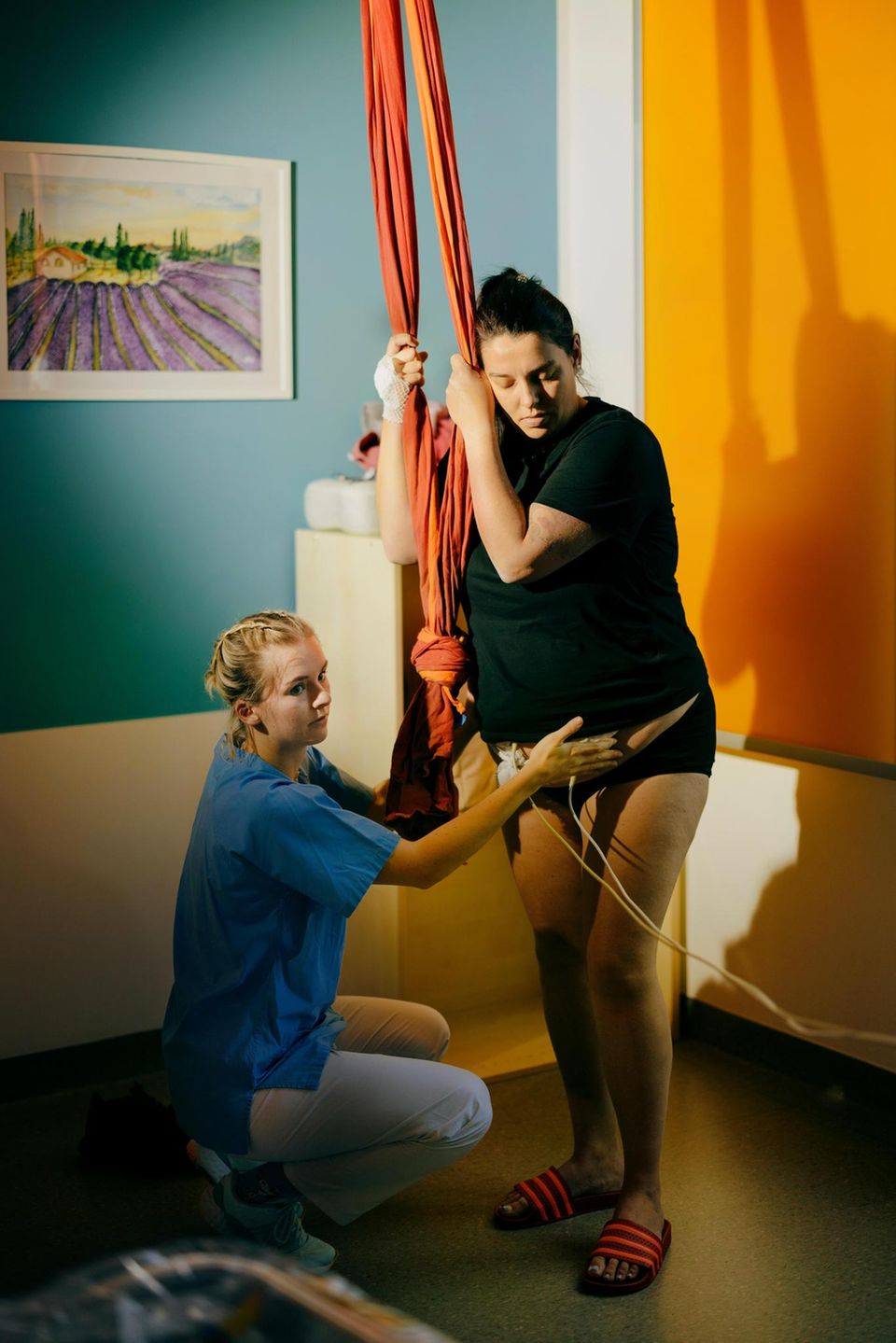They certainly help in life: Author Constanze Löffler and photographer Lena Giovanazzi met an open team and open-minded patients in the obstetric medicine department in Jena, who gave them an insight into all areas of obstetric medicine
If Luisa Herpig, 33, and her partner had had their way, they would have enjoyed a few more quiet days. But then the amniotic sac burst and contractions began. The baby probably wants to come faster. It is the first child for the fine optician. The young woman with the thick, dark brown ponytail sounds pragmatic: “The main thing is that our son is fine.” The contraction writer taps steadily in front of him, almost as if he wanted to emphasize Herpig’s wish. Midwife Henriette Misztrik carefully pushes the device’s sensor on Herpig’s stomach a little deeper as the next contraction approaches: “Breathe deep into your stomach, just like that, you’re doing really well,” the midwife encourages the pregnant woman. Luisa Herpig audibly blows out air at short intervals. “Ahhhhhhh, that really hurts.”
Around 738,000 children are born in Germany every year. However, supporting birth is only a fraction of modern birth medicine. “We look after the women shortly after conception, watch over the mother and child during the pregnancy and take care of them early on so that everything runs smoothly in the delivery room,” says Ekkehard Schleußner, 62, head of obstetric medicine at the Jena University Hospital. Schleußner, father of four and grandfather of three, did an internship in the delivery room in Jena 37 years ago as a medical student at the Berlin Charité. Within the first few hours he decided that he belonged here. With the exception of brief interruptions, he remained loyal to Jena. In 2005 he finally returned and took over the management of the clinic. A dream job, as he says. Schleußner likes to keep an eye on everything himself. Today, too, he will commute all day between the outpatient clinic and the delivery room, between the maternity ward and the premature baby ward. “You may not be able to tell by looking at it, but I can easily manage 10,000 steps a day,” he says in a Saxon singsong.

Luisa Herpig (r.) rests in the delivery room between two contractions. Midwife Henriette Misztrik checks the child’s heartbeat in the womb
© Lena Giovanazzi
Pregnancy care is also part of obstetric care
Schleußner makes his next stopover at delivery room 4. He wants to briefly check on Luisa Herpig. Two days ago she came to the clinic after measuring her blood pressure at home, which had been fluctuating for some time and had occasionally risen significantly. This time the device showed 180/100 mmHg, which meant the pressure was far too high. Normal is 120/80. High levels can indicate pregnancy toxemia, a complication that is equally dangerous for mother and child. So Herpig had her husband drive her to Jena, 20 minutes away. “Our son is an absolute dream child. We didn’t want to risk anything with the birth and so we definitely went to the university hospital,” says husband Jonas Tabbert, while his wife is still recovering from the contraction. A good decision, because it wasn’t just Luisa Herpig’s blood pressure that was abnormal. “When we checked the ultrasound, the child appeared very large. This could be an indication that the mother’s blood sugar levels were too high,” says Tanja Groten, the deputy clinic director. A blood sample confirmed the suspicion.

